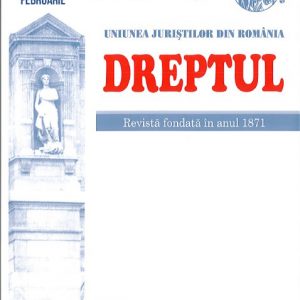-
 This study aims to identify the constituent moment, a moment when the manifestation of the original constituent power intervenes. While in case of the derived constituent power formal and material limits are pre-established, and the revision of the Constitution is an activity with a consistent procedural component, in case of the original constituent power an analysis of comparative law can identify ex ante which are the main moments when we can speak about the manifestation of the constituent power. These moments are closely related to different internal and international social events which took place in the historical evolution of a state, and these can be grouped into: constituent moments mainly determined by a revolution, by the change in the political regime or by the formation of a state. Thus, the main questions to which we seek to answer are: Which is the onset signal that will lead to the beginning of the constituent procedure? Is the new Constitution legitimate? Is the new Constitution the work of an original constituent power or of a derived constituent power?
This study aims to identify the constituent moment, a moment when the manifestation of the original constituent power intervenes. While in case of the derived constituent power formal and material limits are pre-established, and the revision of the Constitution is an activity with a consistent procedural component, in case of the original constituent power an analysis of comparative law can identify ex ante which are the main moments when we can speak about the manifestation of the constituent power. These moments are closely related to different internal and international social events which took place in the historical evolution of a state, and these can be grouped into: constituent moments mainly determined by a revolution, by the change in the political regime or by the formation of a state. Thus, the main questions to which we seek to answer are: Which is the onset signal that will lead to the beginning of the constituent procedure? Is the new Constitution legitimate? Is the new Constitution the work of an original constituent power or of a derived constituent power? -
 The article proposes procedural solutions, in compliance with the requirements of the ECHR practice, when changing the legal classification given to the deed, in appeal, by appreciating that the change in the legal classification given to the deed by the act of referral can be made by an undeniable conclusion, prior to the debate on the appeal, or by the conclusion for reinstating the case on the list of cases, provided that the court has debated the appeal, pending further ruling also for the reason concerning the change in the legal classification, which it found to be well-grounded.
The article proposes procedural solutions, in compliance with the requirements of the ECHR practice, when changing the legal classification given to the deed, in appeal, by appreciating that the change in the legal classification given to the deed by the act of referral can be made by an undeniable conclusion, prior to the debate on the appeal, or by the conclusion for reinstating the case on the list of cases, provided that the court has debated the appeal, pending further ruling also for the reason concerning the change in the legal classification, which it found to be well-grounded. -
 In case of admission of the extraordinary remedy of the contestation for annulment, based on the provisions of Article 426 b) of the Criminal Procedure Code (the defendant has been convicted, although there was evidence of a cause of cessation of the criminal trial), declared exclusively by the convicted person, the court proceeds to rehearing the ordinary remedy of the appeal, in compliance with the principle of non-aggravation of the legal situation of the convicted person, as well as by taking into account, where relevant, the principle of application of the more favourable criminal law in order to calculate the date on which the special prescription period for criminal liability expired.
In case of admission of the extraordinary remedy of the contestation for annulment, based on the provisions of Article 426 b) of the Criminal Procedure Code (the defendant has been convicted, although there was evidence of a cause of cessation of the criminal trial), declared exclusively by the convicted person, the court proceeds to rehearing the ordinary remedy of the appeal, in compliance with the principle of non-aggravation of the legal situation of the convicted person, as well as by taking into account, where relevant, the principle of application of the more favourable criminal law in order to calculate the date on which the special prescription period for criminal liability expired.
